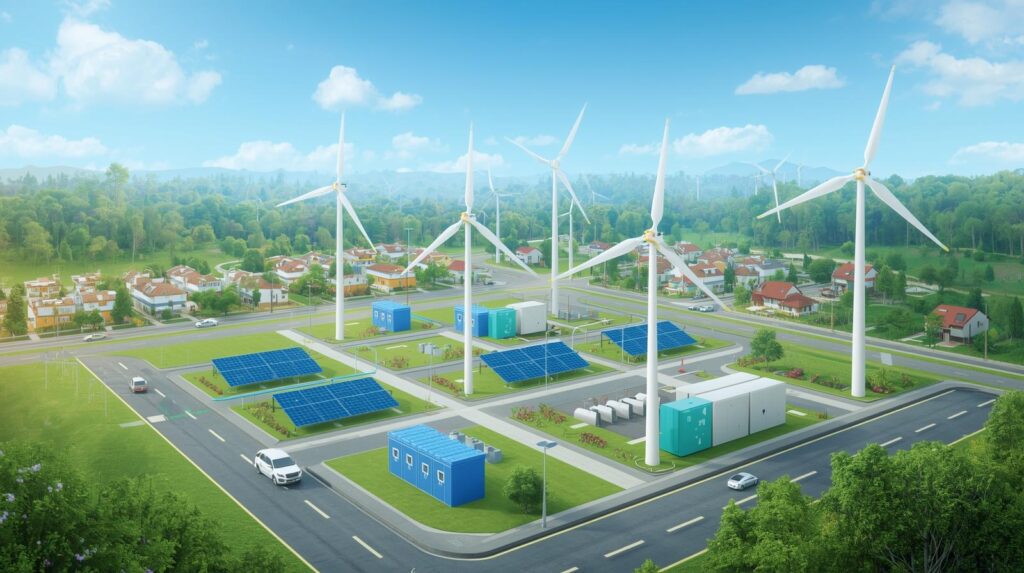The global energy landscape is undergoing a fundamental transformation as conventional power systems give way to more flexible, resilient, and decentralized solutions. At the heart of this shift lies the microgrid—a localized energy system capable of operating independently or in conjunction with the main grid. Microgrids integrate distributed energy resources, including solar panels, wind turbines, energy storage systems, and backup generators, to provide reliable and efficient power. The evolution of the microgrid market reflects broader trends in energy decentralization, digitalization, and sustainability, marking a transition from traditional centralized power systems to intelligent smart energy networks.
Download PDF Brochure @ https://www.marketsandmarkets.com/pdfdownloadNew.asp?id=917

Traditional Power Systems: Limitations and Challenges
Traditional electricity grids have historically relied on centralized power generation, where large-scale plants transmit energy over extensive networks to end-users. While this model has served the global population for decades, it comes with inherent limitations. Centralized grids are highly vulnerable to disruptions caused by natural disasters, equipment failures, or cyberattacks. Transmission losses over long distances, limited integration of renewable energy, and inflexible load management are additional challenges that restrict efficiency and sustainability.
These limitations have highlighted the need for more localized, resilient, and adaptive energy solutions. Consumers and industries alike are seeking alternatives that provide uninterrupted power, reduce environmental impact, and offer better control over energy usage. This demand has catalyzed the rise of microgrids as a complementary and, in some cases, alternative approach to traditional power systems.
Emergence of Microgrids
The microgrid concept emerged as a response to the growing need for decentralized, reliable, and efficient energy systems. Early microgrids were often deployed in remote or off-grid locations, providing critical electricity to communities, military bases, and industrial facilities. These systems combined conventional generators with small-scale renewable energy sources, enabling localized power generation and reducing dependence on the central grid.
As renewable energy technologies matured, microgrids evolved from simple backup systems into sophisticated networks capable of real-time energy management. The integration of energy storage solutions, smart controllers, and IoT-enabled monitoring transformed microgrids into intelligent systems that optimize generation, storage, and consumption. This evolution has paved the way for the emergence of smart energy networks, where microgrids not only provide reliability but also contribute to energy efficiency and sustainability goals.
Technological Advancements Driving Market Evolution
The evolution of the microgrid market has been largely driven by technological innovation. IoT devices and sensors enable continuous monitoring of energy production and consumption, while advanced controllers and software platforms allow for real-time optimization of distributed resources. Artificial intelligence and machine learning algorithms analyze energy demand patterns, predict load fluctuations, and automate decision-making to maximize efficiency and minimize operational costs.
Drones and satellite-based monitoring systems further enhance microgrid management, enabling remote inspection and performance tracking. Energy storage technologies, particularly lithium-ion batteries and emerging alternatives such as flow batteries, have improved the ability of microgrids to balance supply and demand, integrate intermittent renewable energy, and operate autonomously when the main grid is unavailable.
The adoption of digital communication protocols and cloud-based management systems has enabled multiple microgrids to interconnect, forming larger smart energy networks capable of coordinated energy distribution, peer-to-peer trading, and resilience against grid failures. This integration of digital technologies marks a clear departure from traditional centralized power systems, positioning microgrids as central components of the future energy ecosystem.
Market Drivers and Regional Trends
The growth of the microgrid market is fueled by increasing demand for energy reliability, sustainability, and cost optimization. Frequent power outages, rising energy costs, and the growing penetration of renewable energy sources are pushing industries, commercial facilities, and urban centers to adopt microgrid solutions. Regulatory support, government incentives, and funding programs aimed at promoting clean energy and grid modernization further bolster market expansion.
North America and Europe lead the global microgrid market, driven by advanced infrastructure, favorable policies, and early adoption of smart technologies. The Asia Pacific region, however, is emerging as the fastest-growing market due to increasing electricity demand, rural electrification projects, and significant investments in renewable energy integration. Industrial applications, commercial establishments, and critical infrastructure are the primary sectors driving regional microgrid adoption.
Challenges in the Evolution of Microgrids
Despite their advantages, microgrids face challenges that can hinder widespread adoption. High initial capital costs, complexity in design and integration, and the need for specialized technical expertise remain key barriers. Regulatory uncertainty, interoperability issues, and cybersecurity concerns in connected microgrid systems can further slow deployment. However, ongoing innovation in technology, policy standardization, and cost-effective solutions are steadily addressing these challenges, enabling broader adoption.
Future Outlook: Smart Energy Networks
The microgrid market is poised to evolve further into fully integrated smart energy networks. These networks will combine multiple interconnected microgrids with advanced analytics, AI-driven automation, and distributed ledger technologies to create a resilient, efficient, and sustainable energy ecosystem. Microgrids will not only provide localized energy security but also support load balancing, renewable energy integration, and decentralized energy trading.
The convergence of digitalization, renewable energy, and energy storage technologies will enable microgrids to function as dynamic, adaptive networks capable of meeting future energy demands. As governments and industries increasingly prioritize sustainability and energy resilience, microgrids are set to play a pivotal role in the transition toward a smarter, more decentralized energy infrastructure.